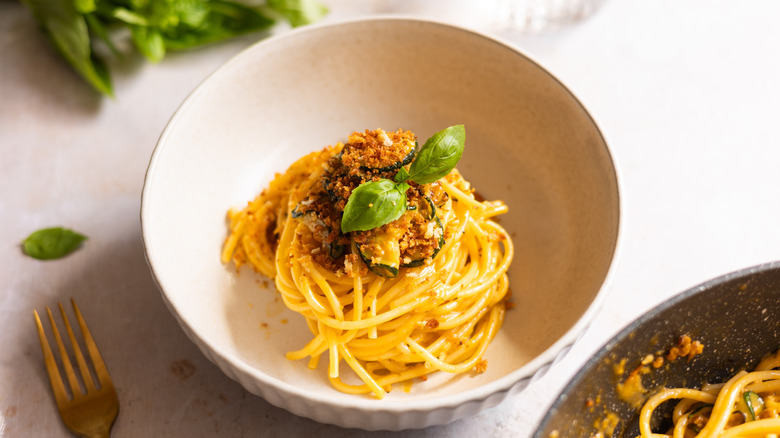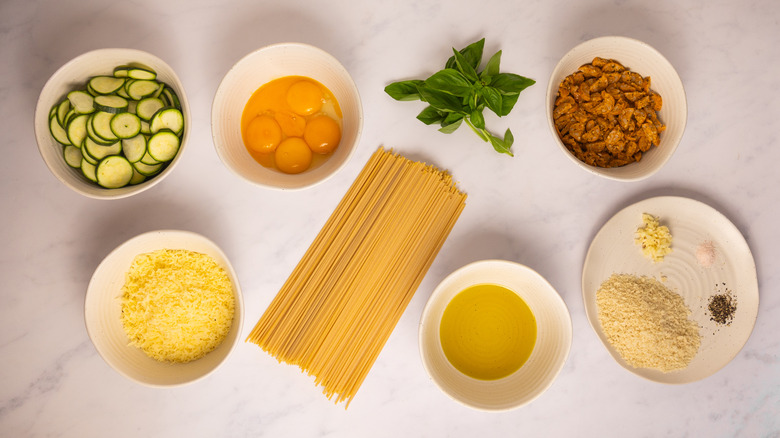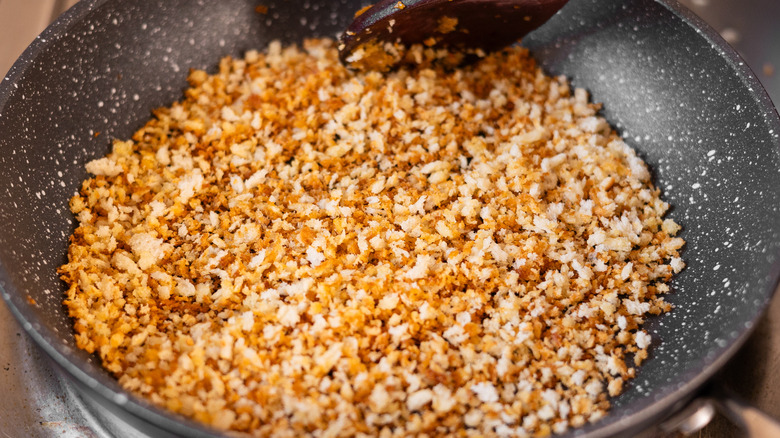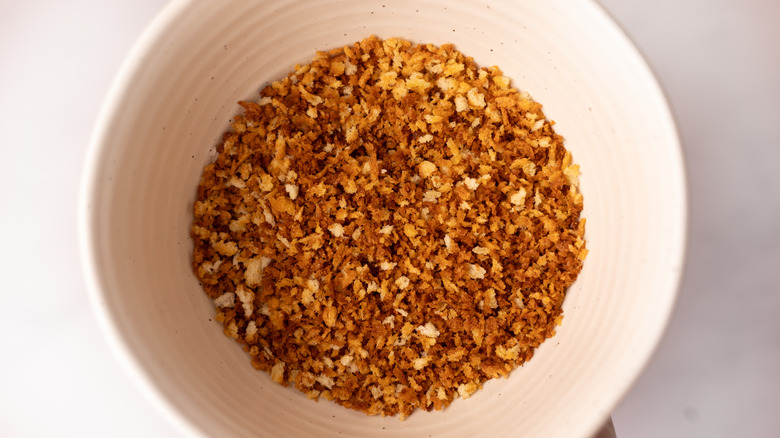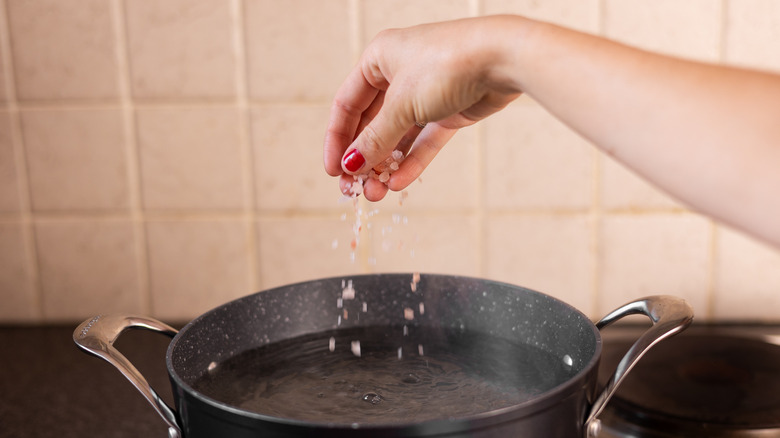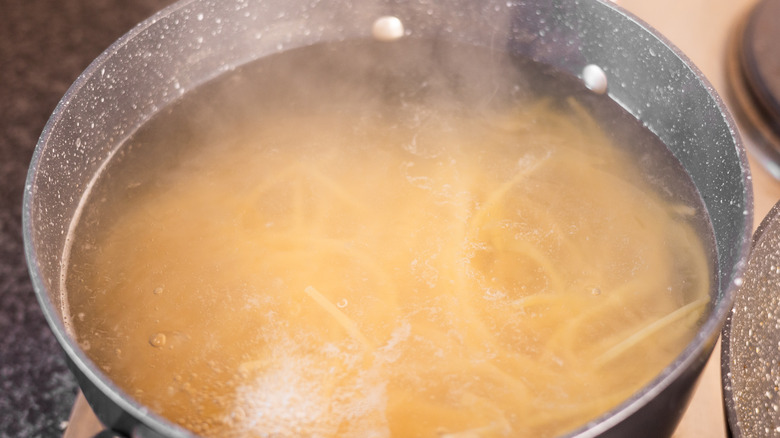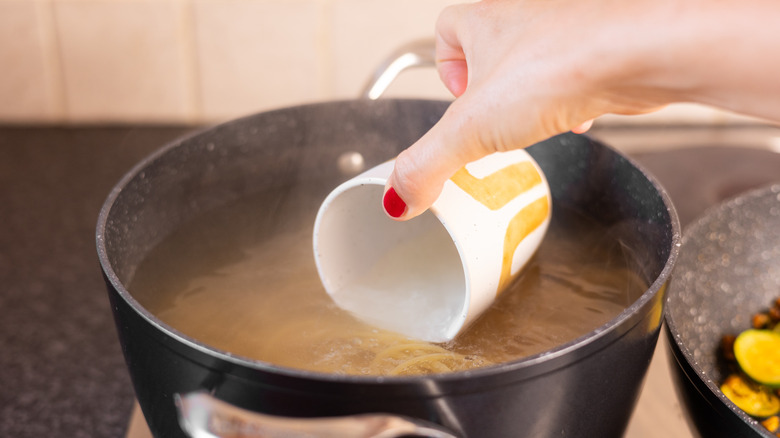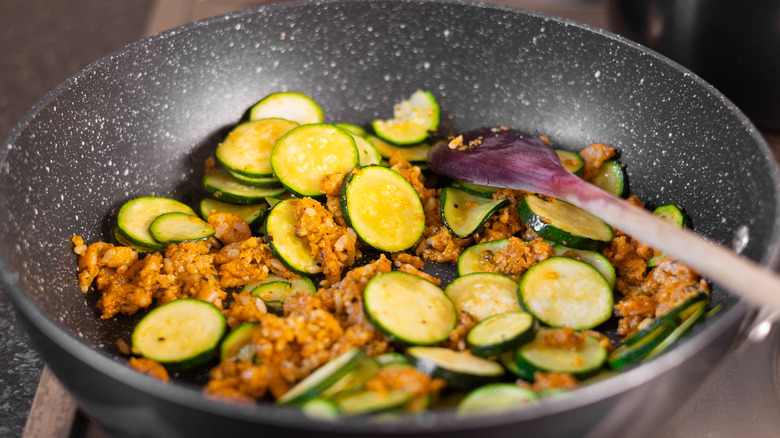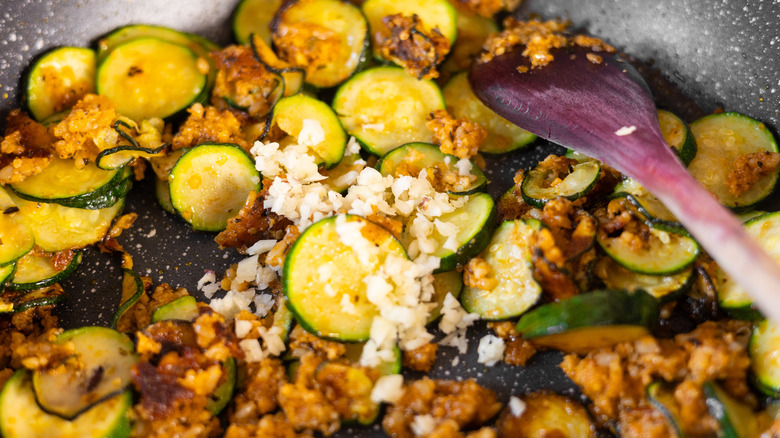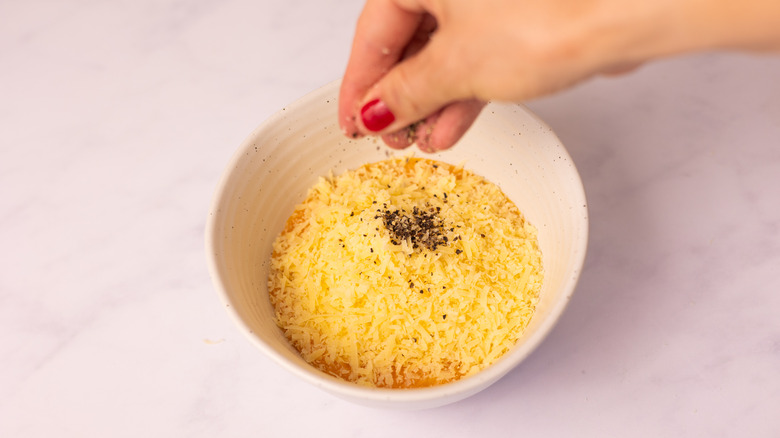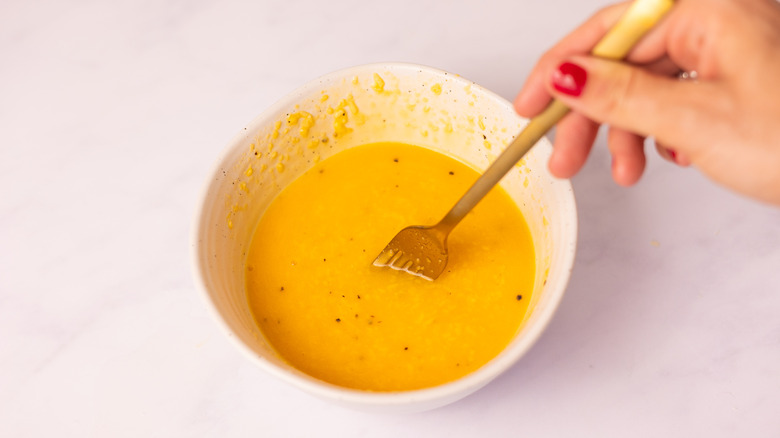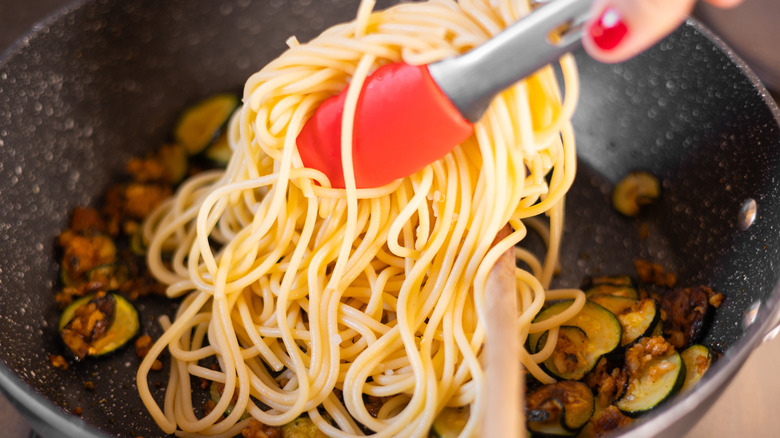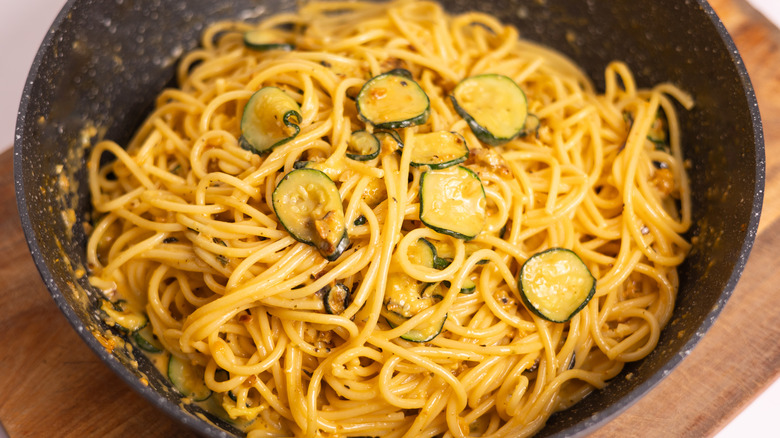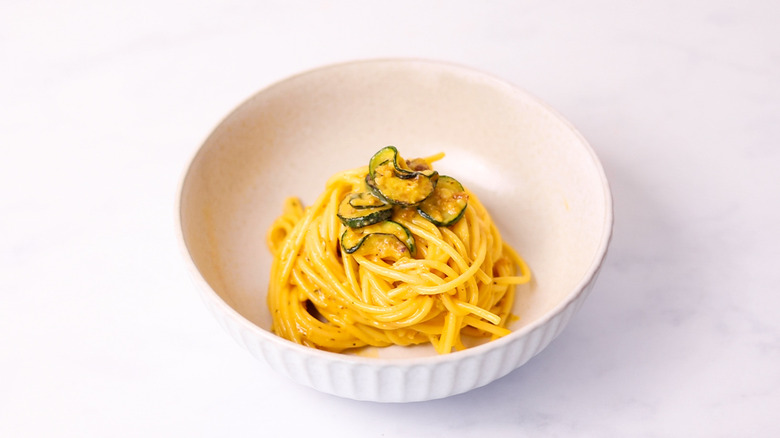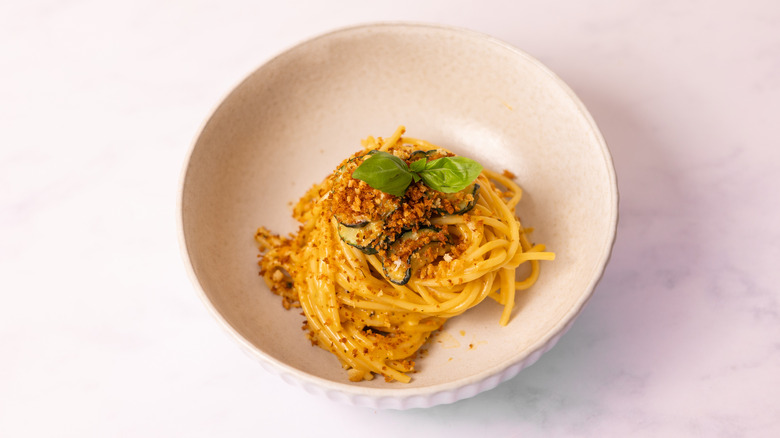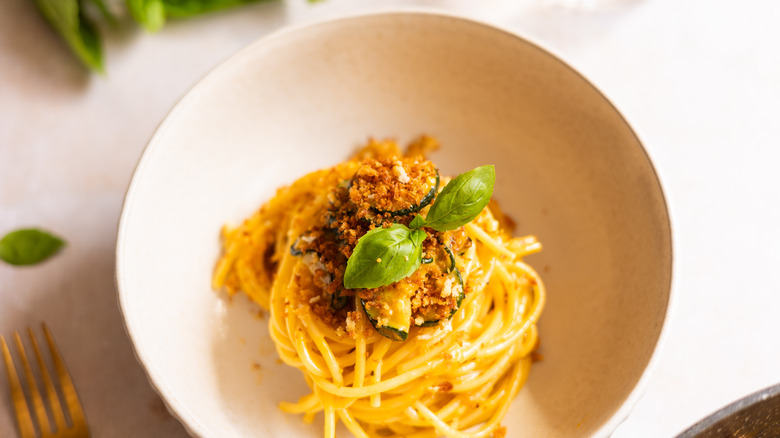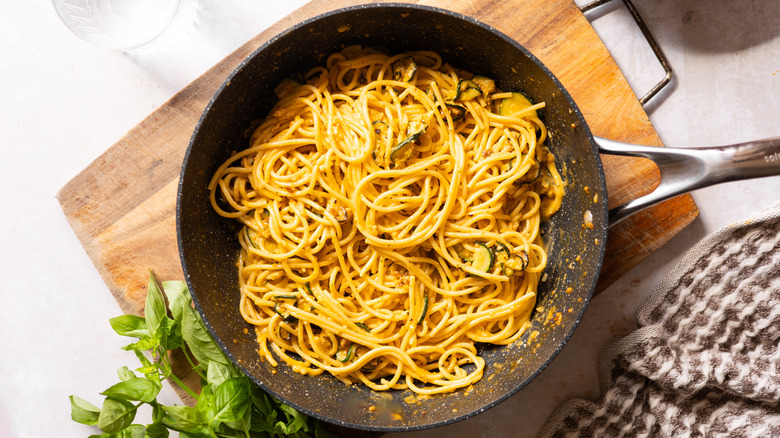Vegetarian Spaghetti 'Carbonara' Recipe
This satisfying vegetarian spaghetti "carbonara" from recipe developer Tanika Douglas is a rendition of the cherished Italian classic (hence the quotes); the usual pancetta takes a backseat in favor of a lively mix of vegetarian sausage and sauteed zucchini. The recipe offers a modern spin, blending traditional flavors with wholesome ingredients, all tied together with a luscious sauce of egg yolks and Parmesan. This creamy coating wraps around each spaghetti strand, and the addition of crispy panko breadcrumbs adds a delightful crunch.
Douglas states, "This vegetarian version isn't just about swapping out ingredients; it's about infusing character into every element. The golden-brown vegetarian sausages and tender zucchini, filled with garlicky goodness, add depth and richness. Blending the egg yolk mixture with pasta water ensures a creamy consistency that clings perfectly to the pasta, ensuring each forkful is brimming with savory flavor."
Whether you're a dedicated vegetarian or someone exploring flavorful alternatives, this vegetarian dish is a testament to how a beloved recipe can evolve while preserving its comforting appeal.
Gather the ingredients for the vegetarian carbonara spaghetti
To create this vegetarian spaghetti carbonara, you will need: olive oil, breadcrumbs, salt, spaghetti, sausages, zucchini, garlic, egg yolks, Parmesan, black pepper and basil leaves. If vegetarian, it's important to use vegetarian-friendly Parmesan cheese, which is a rennet-free variety (but more on that more later).
While zucchini works perfectly in this recipe, it can be easily substituted, allowing you to use seasonal vegetables while maintaining the essence of the dish. Asparagus and tender-stem broccoli work well as substitutes, adding the vibrant green color and flavor that help create this vegetarian pasta dish.
Step 1: Place a pan over heat
Place a pan over medium heat and add 1 tablespoon of the oil and the panko breadcrumbs.
Step 2: Toast the breadcrumbs
Allow the breadcrumbs to toast, stirring intermittently, until golden brown. Spoon into a bowl and set aside for later.
Step 3: Boil the water
Fill a large pot with water and the salt. Bring to the boil.
Step 4: Cook the spaghetti
Add the spaghetti and cook for 8 minutes or until al dente.
Step 5: Reserve the pasta water
Reserve 2 cups of the pasta water for later use.
Step 6: Saute zucchini and sausages
While the pasta is cooking, place a large pan over medium heat and add the remaining olive oil, vegetarian sausage, and sliced zucchini. Saute sausage and zucchini for 7 minutes or until golden brown.
Step 7: Stir through the garlic
In the last minute of cooking, add the garlic and stir through until fragrant.
Step 8: Make the sauce
In a small bowl, use a fork to mix together the egg yolks, grated Parmesan cheese, and pepper.
Step 9: Temper the egg yolks
Slowly add ¾ cup of the warm pasta water in a thin stream, mixing constantly with the fork. This will prevent the yolk from scrambling.
Step 10: Add the spaghetti and zucchinis
Add the cooked spaghetti and the tempered egg yolks to the pan of zucchini and sausage. Heat over medium-low heat.
Step 11: Toss the pasta
Toss the sauce through the spaghetti until the sauce is silky, reduced, and coats the each strand of pasta. Loosen the sauce with additional remaining pasta water as needed.
Step 12: Serve the pasta
Immediately remove pan from heat and serve the vegetarian carbonara.
Step 13: Garnish the pasta
Garnish each bowl with a sprinkle of toasted breadcrumbs and basil leaves.
Is Parmesan cheese vegetarian?
Parmesan cheese is not technically vegetarian when made in the traditional production process, where animal-derived rennet is historically used. Rennet, an enzyme extracted from the stomach lining of calves, aids in the coagulation of milk during cheese-making. However, there's a glimmer of hope for cheese enthusiasts adhering to a vegetarian lifestyle: Rennet-free Parmesan alternatives are increasingly available in the market. Instead of animal rennet, these versions use microbial or vegetable-based coagulants, making them suitable for vegetarians while preserving the cheese's distinctive flavor and texture.
Douglas says, "Fortunately, sourcing rennet-free Parmesan has become more common and accessible in recent years. Many cheese producers offer vegetarian-friendly options which are labelled as such, providing assurance to individuals following vegetarian dietary practices." This expanded availability allows cheese lovers to indulge in the distinct flavors and culinary versatility of Parmesan without compromising their dietary preferences or flavor.
Why is tempering egg yolks important when making carbonara?
Tempering egg yolks is an important step when making carbonara and pivotal in achieving the desired creamy texture without ending up with scrambled eggs. "This method involves slowly introducing a hot liquid — typically pasta water — to the egg yolks while whisking continuously. This gradual incorporation prevents the yolks from cooking too rapidly or curdling when added to the hot pasta," Douglas explains. Here's why this process is crucial:
Egg yolks are exceptionally sensitive to heat. If exposed suddenly to the high temperature of the pasta or sauteed ingredients, they can coagulate, resulting in the formation of unwanted scrambled eggs. Tempering gradually brings the yolks to a higher temperature without shocking them, preventing the unwanted texture change. When properly tempered and integrated with the starchy pasta water and Parmesan, the eggs create a luxurious, silky, sauce that coats each strand of spaghetti evenly.
Vegetarian Spaghetti 'Carbonara' Recipe
This satisfying pasta is not a traditional carbonara; here, the pancetta takes a backseat in favor of vegetarian sausage and sauteed zucchini.
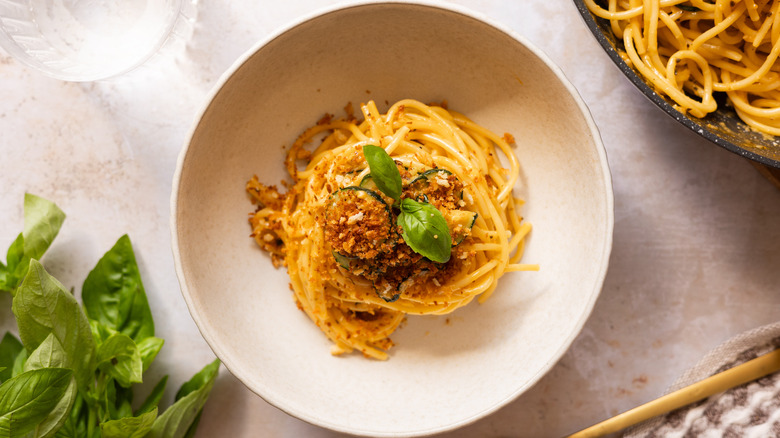
Ingredients
- 4 tablespoons olive oil, divided
- ½ cup panko breadcrumbs
- 3 teaspoons salt
- 14 ounces spaghetti
- 2 vegetarian sausages, finely chopped
- 2 small zucchini, sliced
- 2 cloves garlic, minced
- 5 egg yolks
- 1 cup grated Parmesan (rennet-free if vegetarian)
- 1 teaspoon black pepper
- ¼ cup basil leaves
Directions
- Place a pan over medium heat and add 1 tablespoon of the oil and the panko breadcrumbs.
- Allow the breadcrumbs to toast, stirring intermittently, until golden brown. Spoon into a bowl and set aside for later.
- Fill a large pot with water and the salt. Bring to the boil.
- Add the spaghetti and cook for 8 minutes or until al dente.
- Reserve 2 cups of the pasta water for later use.
- While the pasta is cooking, place a large pan over medium heat and add the remaining olive oil, vegetarian sausages, and sliced zucchini. Saute sausage and zucchini for 7 minutes or until golden brown.
- In the last minute of cooking, add the garlic and stir through until fragrant.
- In a small bowl, use a fork to mix together the egg yolks, grated Parmesan cheese, and pepper.
- Slowly add ¾ cup of the warm pasta water in a thin stream, mixing constantly with the fork. This will prevent the yolk from scrambling.
- Add the cooked spaghetti and the tempered egg yolks to the pan of zucchini and sausage. Heat over medium-low heat.
- Toss the sauce through the spaghetti until the sauce is silky, reduced, and coats the each strand of pasta. Loosen the sauce with additional remaining pasta water as needed.
- Immediately remove pan from heat and serve the vegetarian carbonara.
- Garnish each bowl with a sprinkle of toasted breadcrumbs and basil leaves.
Nutrition
| Calories per Serving | 777 |
| Total Fat | 32.7 g |
| Saturated Fat | 9.9 g |
| Trans Fat | 0.0 g |
| Cholesterol | 207.1 mg |
| Total Carbohydrates | 85.5 g |
| Dietary Fiber | 4.8 g |
| Total Sugars | 4.5 g |
| Sodium | 637.6 mg |
| Protein | 34.4 g |
